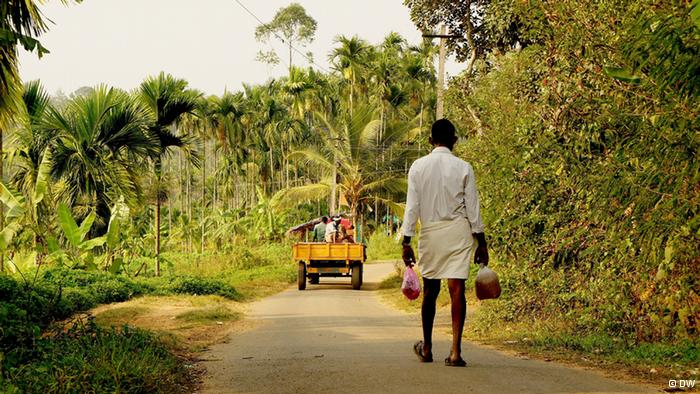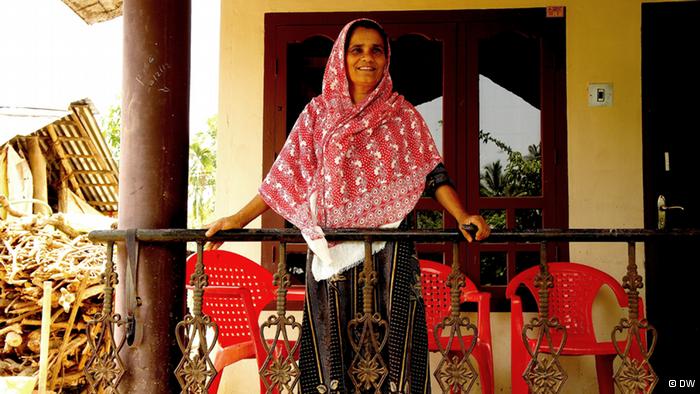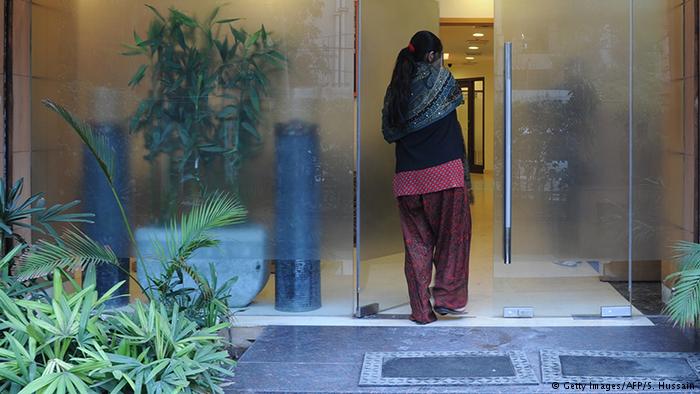Keralan families pay a high price for remittances
 Almost a tenth of Kerala’s population lives in the Gulf States and in Europe. While highly skilled graduates leave to seek lucrative jobs elsewhere, many poor families depend on remittances from abroad – at a high price.
Almost a tenth of Kerala’s population lives in the Gulf States and in Europe. While highly skilled graduates leave to seek lucrative jobs elsewhere, many poor families depend on remittances from abroad – at a high price.
One morning, Aisha P.N. decided to go on hunger strike. Her employer rushed into the dark hut made of rough plywood and cardboard, hidden from sight under his mahogany staircase. He stood over her worn mattress, threatening to beat her with a stick if she didn’t get up. His wives and children looked on, impassively. “But I just didn’t care,” Aisha says, absent-mindedly tugging at her loose red scarf.
“I was ready to die. I couldn’t take it any more. I was just too exhausted.”
When Aisha’s husband had had to sell their house to pay off his debts in 2003, Aisha, then in her early forties, knew that she would have to leave for the Gulf. “I didn’t want to go, of course not, but someone had to.” Aisha contacted a local agent in the neighboring village, who arranged for her visa and transport. When she got on the plane to Oman, her hands were shaking. She was terrified. She had never even left her town before.
Aisha, who quit school after the eighth grade to get married, says she didn’t have a choice; her son had just got married and someone had to provide for her three other children and disabled husband who was in a wheelchair. Aisha had been unable to find a job in Muttil, a sprawling town in Kerala’s Wayanad district, nestled among the lush banana and tea plantations and light-green rice paddies of Southern India’s mountain range, which is popular among foreign tourists.
Few jobs
There are few jobs outside of tourism in Kerala. After decades of sharp wage increases under India’s first-
democratically elected communist government, high labor costs make industrial and agricultural production extremely expensive and uncompetitive, says Danesh Kumar. “Labor is so expensive here that no one is prepared to set up shop when they can just go to neighboring Tamil Nadu or Karnataka,” he adds. Danesh is an economist who works for a World Bank project in Wayanad.
Even Kerala’s many university graduates have few prospects of finding a good job at home. About a third of all graduates leave. The Centre for Development Studies based in the Keralan capital of Trivandrum, estimates that some 2.28 million Keralans – out of a population of roughly 33 million – were living abroad in 2011, up from 1.84 million in 2003.
“Gulf houses”
Take an over-crowded, creaking bus speeding along Kerala’s bumpy roads, and you will fly by small villages – and huge villas with marble columns and wide driveways. The villas are locally known as “Gulf houses.” Their owners are project managers and engineers in Saudi Arabia, Oman or Kuwait. Many work abroad for decades, returning home every couple of years with money to spend. Kerala is one of the world’s top remittance receivers, ranking just behind Tajikistan, according to a recent study by the Indian Institute of Management in Bangalore. Up to 40 percent of all remittances flowing into India are destined for Kerala.
Yet there is a sharp contrast between those leaving for lucrative management jobs and low-skilled Keralans who are hired as laborers on construction sites or as maids. Sitting outside her son’s small two-room house, Aisha recalls that she earned just 4,000 rupees, some sixty euros, a month. “It was barely enough for my family to survive,” she says.
But worse still, she was entirely at her employer’s mercy. Aisha had to get up at four every morning, after just three hours sleep, to stoke the fire, milk the cows and make breakfast. Her grueling work would continue until late at night. “I often didn’t even have time to eat or pray,” she says. Her hands were swollen and chaffed from all the work, and the pain would keep her awake at night. That, and the terrible homesickness: “I cried myself to sleep every night.”
Abuse is not uncommon, Omana TK, the director of a local NGO that equips women with professional skills, says. “Many women have similar stories,” she comments, adding that many male laborers face terrible working conditions, too.
She cried when she reached India
For five months Aisha was not allowed to speak to her family, the local agent in the neighboring village was her only lifeline to the outside world. Her family begged and ended up threatening the agent, before they were given Aisha’s number. “Even when I went on hunger strike, they wouldn’t let me go. They refused give me my passport.” In sheer desperation, Aisha’s husband threatened to kill the agent. Finally, three days into her hunger strike, they let Aisha go. She cried when her plane reached India.
And yet, she decided to leave again. This time, a family friend living in Saudi Arabia found an employer for her. In 2004, she moved to Riyadh to work for the family of an imam. She was treated well, she says. “The family was good, they even took me on hajj, the pilgrimage to Mecca, with them.” She stayed for two and a half years. Then her husband was diagnosed with cancer and she had to return to Kerala to nurse him. A few months later he died, and she moved in with her son. The family is poor, yet they are lucky, Aisha says. Her son is working as a laborer on a government work scheme.
So what is her advice to young women considering working abroad? “If you’re young, don’t go,” Aisha says, emphatically shaking her head. “Don’t ruin your life!”
“But if you’re old and have a family to support, well you don’t have a choice, do you?” But then she suddenly clasps her hands together in mock horror and laughs: “I forgot to offer you tea! You must think I left my good manners in the Gulf!”
Author: Naomi Conrad, Kerala
Editor: Sarah Berning








